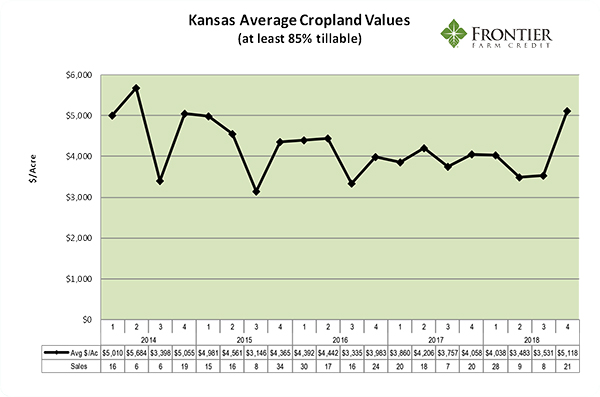Farmland values in eastern Kansas softened slightly in the last half of 2018, but remained stable overall.
While benchmark farmland values in eastern Kansas improved throughout 2018, the gain was modest in the last six months of the year.
In the neighboring state of Nebraska, farmland values as a whole declined 1.0 percent in the last half of 2018 and 0.9 for the year. Iowa, which generally is on the leading edge of changes in the real estate market, declined 1.4 percent in the last six months of 2018, but were largely unchanged for the year.
“The softening of the market in the latter half of 2018 wasn’t unexpected and, in fact, it better aligns farmland values to profitability in the grain sector,” said Tim Koch, chief credit officer for Frontier Farm Credit. “The industry continues to be challenged by compressed margins. For producers who rent farmland, softening in the market will help their bottom line.”
Continued pressure on profit margins could lead to additional softening in 2019. However, the same factors that have helped to stabilize the market for the past three years remain in place, including interest rates near historic lows and strong demand for quality land that is in tighter supply.
The chart below reflects changes in farmland values for the benchmark farms that Frontier Farm Credit tracks in eastern Kansas. The number of benchmark farms is noted in parentheses.
| STATE |
Six Month |
One Year |
| Kansas (7) |
0.7% |
2.8% |
Cropland in 2018 saw a 0.6 percent increase in value; pasture land gained 5.8 percent in value.
Frontier Farm Credit appraises its benchmark farms twice a year, in January and July. In addition, the cooperative compiles records from farmland sales. The cooperative’s objective in using the benchmark farms is to track real estate values without the influence of changes in land quality on sale prices.
The chart below tracks quarterly changes in actual farm sales:


